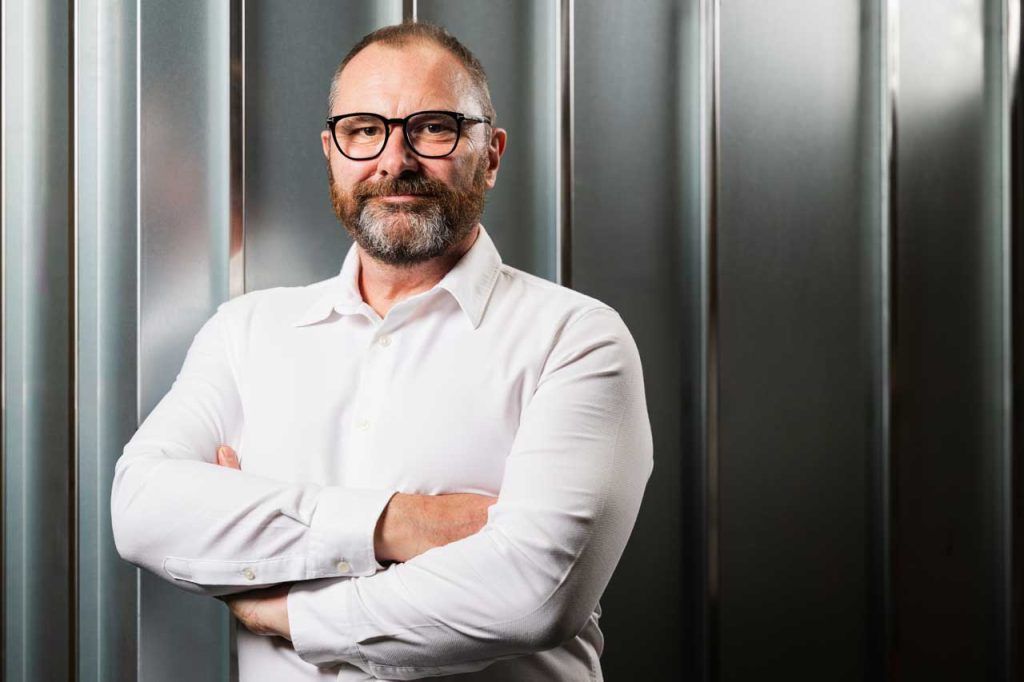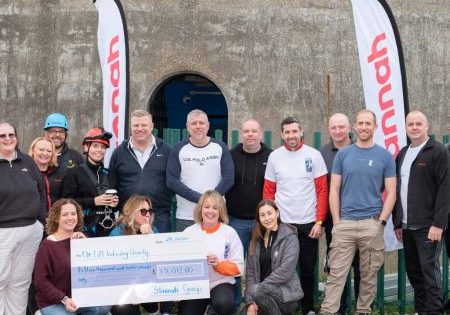From Legacy to Leadership
Dec 3, 2024

ILE Technical Director Jamie Colquhoun shares lift industry perspectives.
Jamie Colquhoun (JC) is an industry veteran with a solid footprint in the world of technical innovation. After nearly two decades at International Lift Equipment (ILE), he shares with your author (KW) some thoughts on the direction of the lift industry and how solution providers must shift and adapt to meet the needs of the future.
KW: How did you manage to find yourself in the lift industry?
JC: By accident. My father was in the industry, which meant I’d been around lift manufacturing my whole life. So, when I was looking for an engineering apprenticeship, I avoided lift companies. I attended lots of interviews with different engineering companies, but I didn’t get any offers. I was an awkward, shy 16-year-old; I didn’t interview well, and I didn’t do very well in the skills tests. After getting nowhere, I applied to Otis. I ended up smashing the skills and aptitude tests and was a different person at the interview. I remember walking out of there knowing I would get an offer … and I did.
KW: ILE have a longstanding relationship with GAL and their door equipment solutions. What makes GAL, an American company, a good solution for the U.K. lift industry?
JC: It is the most robust aftermarket door equipment in the world. We have been supplying it to the most demanding environments for close to 40 years. In that time, the base product has remained the same, with only iterative design changes to keep it in line with safety standards and apply new technologies where applicable.
KW: Since you’ve been in the lift industry, what, in your opinion, is the single most important innovation that has changed things for the better?
JC: The digitalisation of control equipment has certainly changed things for the better with regards to reliability, ease of maintenance and sustainability. This started way before I joined the industry but has accelerated in the last 10-15 years. Motion control and the adoption of synchronous gearless machines have changed the user experience in terms of ride quality, and their efficiency has dramatically improved.
KW: Safety is always a primary concern. What do you recommend U.K. lift servicers offer their customers to improve safety for both the riding public and lift technicians?
JC: Always strive to upgrade or modernise a lift as close to the state-of-the-art standard as possible, and utilise the suite of standards out there to guide you.
KW: How might the advent of AI impact/improve the industry?
JC: AI will have a major impact on the lifts of the not-too-distant future. ILE are working on enhanced versions of our remote monitoring, which will predict equipment failures before they happen. In the near future, maintenance will be predicted by the AI algorithms within our control systems, not by some pre-defined list of “We must check or change this every three months.” The lift will tell the engineer or building manager what to change or check, well before failure.
KW: If you could define ILE in one sentence, what would it be?
JC: We can be described in one word, which is displayed on the wall of our Leicester reception and London trade counter: Versatile.
KW: Are there any new product solutions coming soon?
JC: We are very proud of Nimbus, the core CPU (central processing unit) architecture for our new range of Skycom2 and CAN-X2 control systems. It takes engineer interface, support interactions and connectivity to the next level. We believe it has the most powerful computer of any independently available control panel on the market. It will give us a highly capable platform with tons of spare capacity to develop it further into the next decade. Pilot versions are now installed at various sites, and we will continue this until our full launch at LIFTEX 2025.
In the near future, maintenance will be predicted by the AI algorithms within our control systems, not by some pre-defined list of ‘We must check or change this every three months.’
— ILE Technical Director Jamie Colquhoun
We are developing bespoke off-the-shelf modernisation solutions for machine-room-less (MRL) lifts fitted by the major multinationals. We are also sourcing and testing components for these, specifically developed for ILE from around the globe.
KW: How “international” is International Lift Equipment?
JC: When you see the “International” part of our name you might think that we sell internationally. While this is true, export sales are a just small part of our turnover. ILE was set up to source the best elevator component solutions from around the world to satisfy the burgeoning independent lift companies that were being set up in the 1980s. The world was very different then: You couldn’t get on the internet and search for a new landing door. You had to find the name of a supplier, visit them, do the deal, somehow pay for it in their local currency and somehow manage to import it. ILE did that for you; they did the legwork and found the best equipment from around the globe and offered it to the independent lift market from stock in the U.K.
KW: What makes ILE different?
JC: Unlike other component suppliers who may only sell control systems or only lift cars, we sell everything — most of which are manufactured in-house at our Leicester factory. We know lifts. It doesn’t matter if we are only supplying a control system. We consider the whole installation. This means we often ask the questions that others don’t ask, questioning what we are being asked to supply.
KW: I see ILE has recently refreshed its brand. Why?
JC: The old brand had been with us since our inception. Although familiar to all in the industry, the brand as a whole did not reflect the modern ILE. It was time to introduce a new identity to make people realise that we are evolving.
KW: What can we expect to see from ILE at next year’s LIFTEX in London?
JC: We will be showing our new control systems — CAN-X2 and Skycom2 — with Nimbus at the heart of both of them. We previewed these at the last exhibition, but, this time, they will be fully fledged products ready for sale, with multiple installations under our belt. We’ll showcase our new off-the-shelf solutions to modernise the most popular OEM MRLs, as well as the new GAL OMNI door operator — a universal solution for replacement of failed door operators. We will also be introducing a new MRL for the more budget-conscious customer.
KW: Tell me about your role as a member of the Lift and Escalator Industry Association (LEIA) Quality and Technical Committee (QTC).
JC: I am a member of the LEIA QTC and the British Standards Institute (BSI) technical group MHE/4/-/8. The QTC is responsible for all work relating to standards, which involves representation on committees of a number of organisations, including the BSI, the European Standards Committee (CEN) and the International Organization for Standardization (ISO). Our role is to initiate technical draft documents concerned with lifts and escalators which, after wider consultation, become British Standards. We also maintain close liaisons on all technical matters with government departments such as the Health and Safety Executive, the Department for Business Enterprise and Regulatory Reform and other official bodies, including the U.K. Association of Notified Bodies. The BSI technical group MHE/4/-/8 is the committee who are working on BS5655 part 11 — the code of practice for the undertaking the modifications to existing lifts.
KW: How will the ISO 8100 series of standards impact the domestic industry?
JC: The landscape of elevators in the European Union and worldwide is changing soon, with the introduction of the BSI EN ISO 8100 series of standards which will replace the current EN 81 series. This standard will introduce many changes to enhance the level of safety for passengers and engineers alike. For the first time, this standard will include different means of suspension (belts, small ropes, etc.) This will benefit bespoke solution providers like ourselves greatly, as it means we can design more compact, efficient solutions without having to go down the route of type examination. As BS5655 (currently part 11 and 12, soon to be combined into the new part 11) steer you to modernise a lift as close to the state of the art as practicable, these types of suspension means will become helpful in modernisation. The compact and efficient nature of machines using these suspension means opens up the possibility of converting existing conventional lifts into MRLs, utilising much of the original equipment, thus freeing up the need for machine rooms. This space is not usually usable for anything else in a building, so freeing up the space does not instantly seem important. But, it means you may no longer need to maintain or upgrade things like access routes, lighting, heating, ventilation and electrical for the old machine room. As a result, modernisations may become more affordable, thus allowing the enhanced safety of BSI EN ISO-8100 to be applied to more lifts.
Get more of Elevator World. Sign up for our free e-newsletter.










